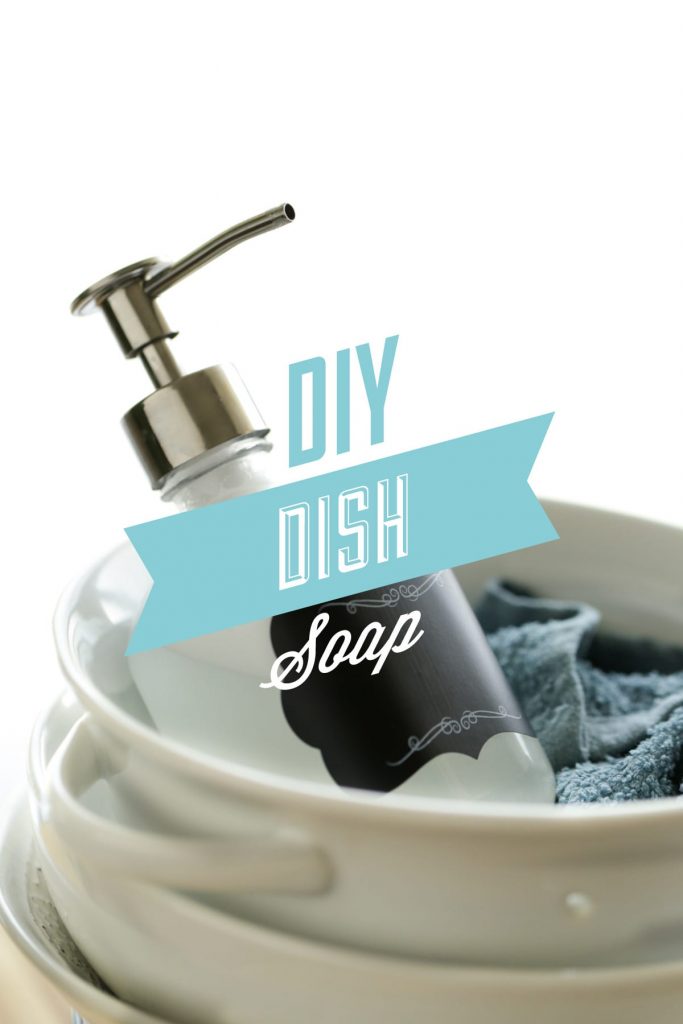
Want to Save This Article?
Enter your email & I’ll send it straight to your inbox. And you’ll get new recipes & tips each week.
“Sorry, Mama!”
Those were the two words I heard as I walked from the hallway into the bathroom where the kids were taking a bath.
“What happened, Piper?”
“I dumped out your shampoo!”
I looked at Piper and Londyn splashing around in the tub now filled with shampoo bubbles, “Why did you dump out the shampoo?”
“We wanted bubbles, but it’s okay, you can make more, Mama!”
It was at that moment that the act of Piper dumping my expensive, store-bought (more natural) shampoo in the bath-tub quickly fled from my thoughts as I chuckled about his comment, “It’s okay, you can make more, Mama!”
I chuckled about this simplified life that’s become so normal to him. One where toothpaste comes in a clear, reusable tube and body wash comes from a mason jar. I’m excited (and if I’m honest, a bit nervous) about his first year of kindergarten next year. “Mrs. Jones, why is this hand soap blue?” or “It’s okay, Mrs. Jones, my mom can make some hand sanitizer for you!” You know, totally normal five year-old stuff. Maybe Mrs. Jones and I should have a talk before the big first day?
Now, on to the DIY or as Piper would say, “You can make more, Mama” project of the day.
I think you’re going to love today’s DIY as it’s become one of the most requested homemade recipes around Live Simply. Today is finally the day for DIY Dish Soap! So gather the supplies and fire-up the stove-top, we’re going to make an effective homemade dish soap that’s tough on germs and grease. In other words, this stuff actually works!
First, let’s take a look at the ingredients…
1. Washing Soda: Just like baking soda, washing soda has the cleaning power to cut tough dirt, stains, and even grease. Not only does this ingredient take care of the unwanted stains and grease, it also deodorizes. That Tupperware of two week-old spaghetti is no match for this stain-fighting and deodorizing ingredient.
2. Borax: This ingredient has been highly debated in the natural community. Some believe this ingredient is toxic, while others, like myself, hold strong to the belief that borax is just as natural as baking soda. If you’re on the fence about this ingredient, I highly recommend reading this well-researched article from Wellness Mama. Then, add this ingredient to your homemade dish soap for its grease-fighting power. Borax also helps to fight against hard water spots and residue.
3. Sal Suds: One of my favorite multipurpose DIY ingredients. Castile soap is a concentrated vegetable-based soap with easy to recognize ingredients. I use castile soap for everything from homemade laundry detergent to hand soap and face wash. While I love castile soap, I purchase castile soap’s cousin, Sal Suds, for tough cleaning jobs. Sal Suds is tougher on grease and stubborn stains than castile soap.
4. Essential Oils: Peppermint and tea tree essential oils are known for their natural cleaning power (antibacterial and antiseptic) which is why both are added to this recipe. Peppermint essential oil also adds an amazing fresh scent to this soap.
5. Optional Ingredients: I like to add glycerin and a nourishing oil to this dish soap recipe for moisturizing benefits. Trust me, your hands will thank you! You can add these ingredients or skip them, either way you’ll still create an effective dish soap.
This DIY Dish Soap can easily be doubled or even tripled, if desired. I suggest first trying this recipe and testing it out to see if you like homemade dish soap, as we all have our preferences when it comes to cleaning products.
Before I leave, remember, if your kids decide to enjoy an afternoon of bubbles in the sink, “You can always make more, Mama!” thanks to this super easy DIY Dish Soap recipe.
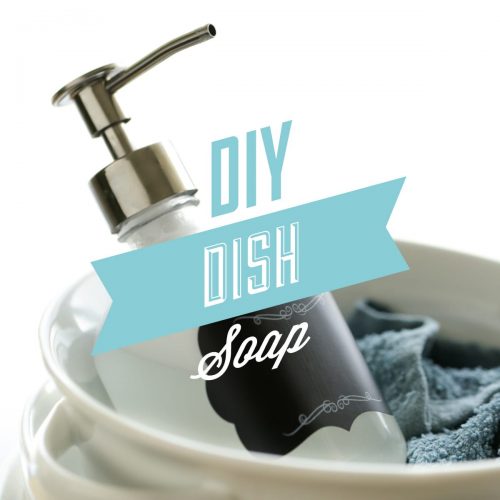
Easy DIY Dish Soap
Ingredients
- 2 TB borax
- 1 TB washing soda
- 1 1/4 cups water
- 3/4 cup Sal Suds
- 15-20 drops peppermint essential oil
- 15-20 drops tea tree essential oil
Optional:
- 1/2 TB skin-nourishing oil jojoba, almond, olive oil, etc. If you'll be using this soap with bare hands.
Instructions
- In a saucepan, heat the the water just until it reaches a boiling point. Turn off the heat and add the washing soda and borax, stirring to dissolve. Let the mixture cool for 3-5 minutes, just until warm, but no longer hot.
- Add the Sal Suds and and essential oils to the water mixture. Vigorously whisk the ingredients together.
- Use a funnel to pour the dish soap into a soap dispenser (I found one at IKEA). The soap may separate after sitting for 24 hours. If this happens, vigorously shake the soap bottle until the ingredients are combined.
When you introduce water into a product without a preservative you always run the risk of introducing bacteria, so use water-based products quickly.
Don’t want to “cook” your dish soap? I love this no-cook recipe as well.
Hard Water Note: If you have hard water, like myself, this soap will clean and remove all the germies (including grease), however, it’s not a 100% spotless formula. This means when you hold up glasses in the light you may see some dry water spots (although the Borax helps to reduce the amount you would see with other homemade dish soap recipes). Ah yes, the curse and blessing of mineral-rich, hard water. Even with store-bought soap I have an issue with water spots.

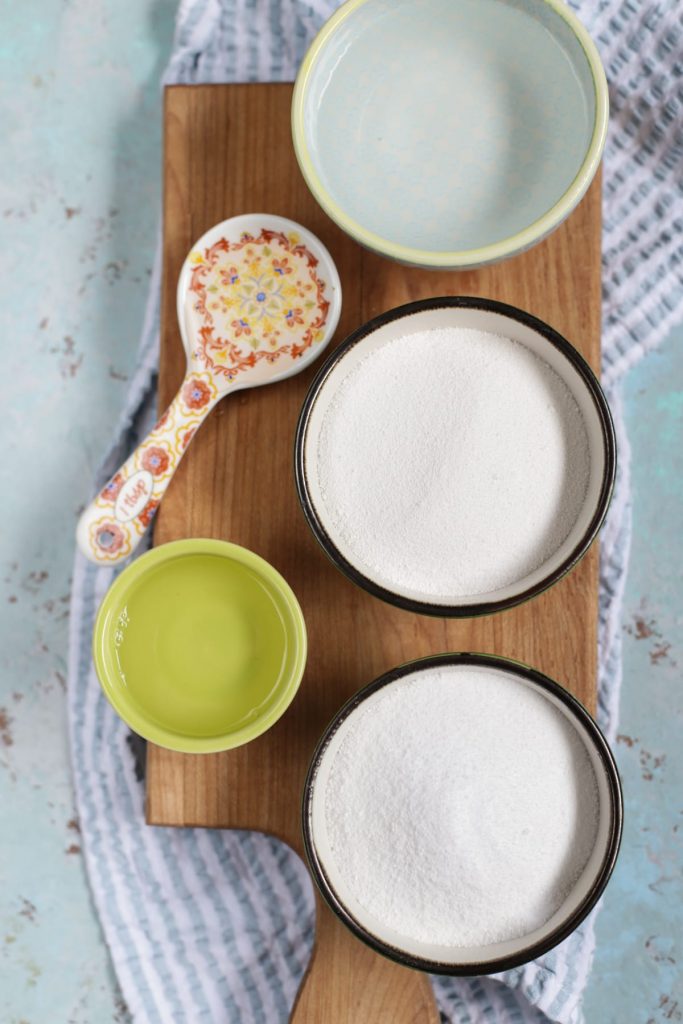
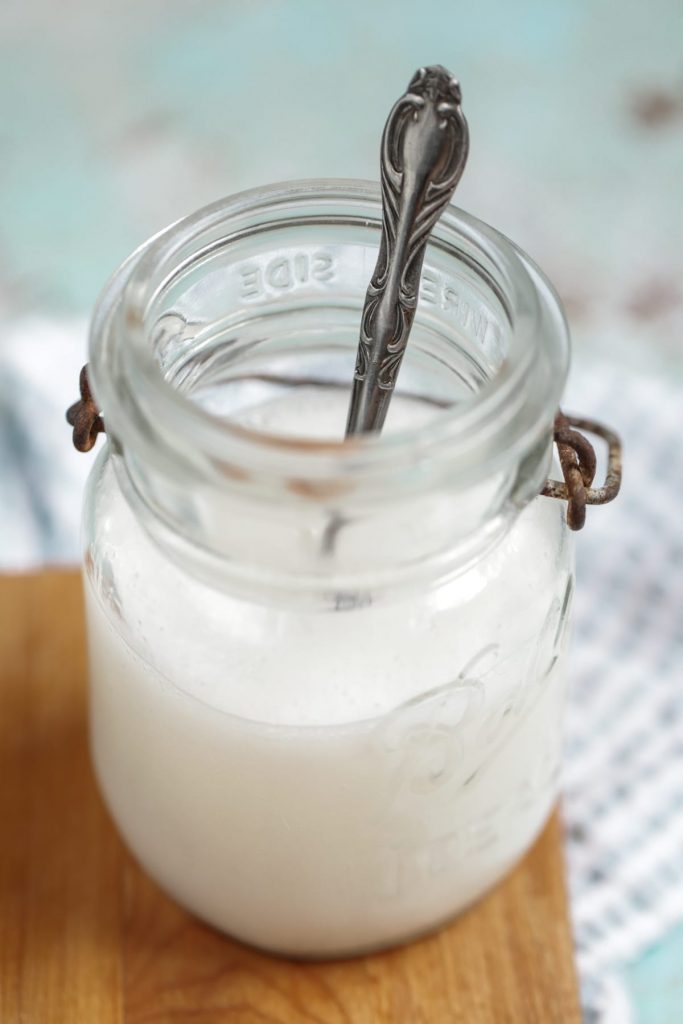

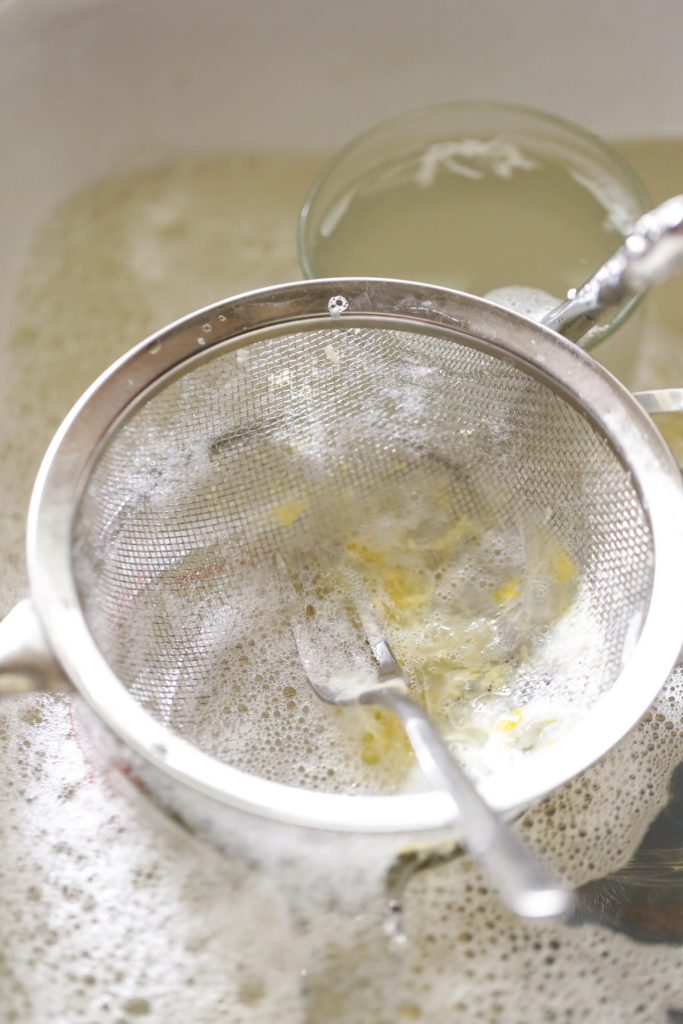
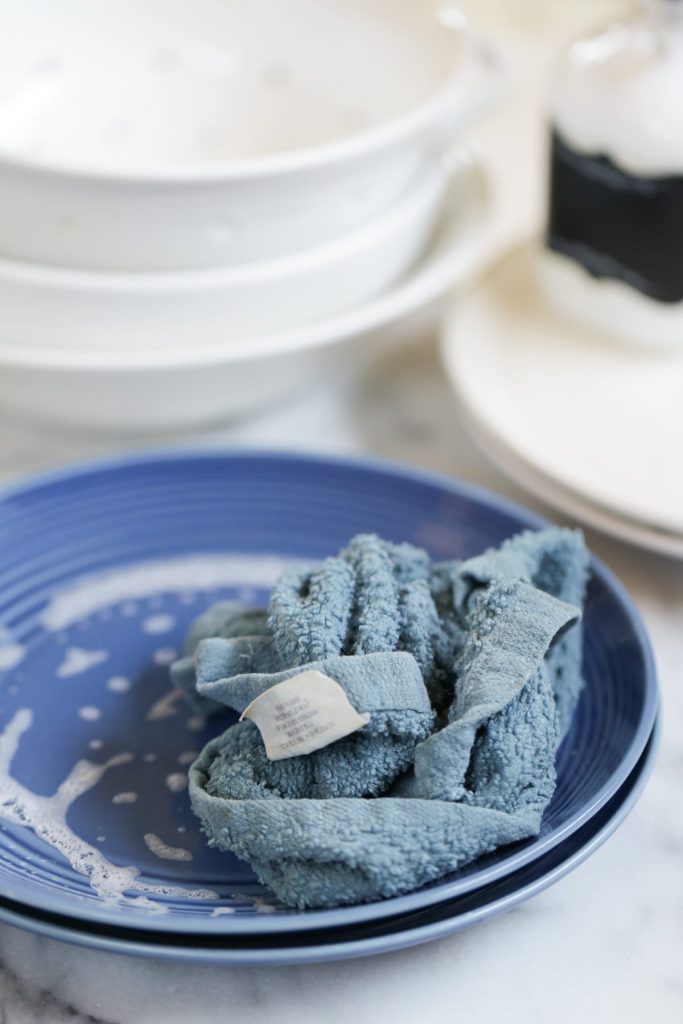
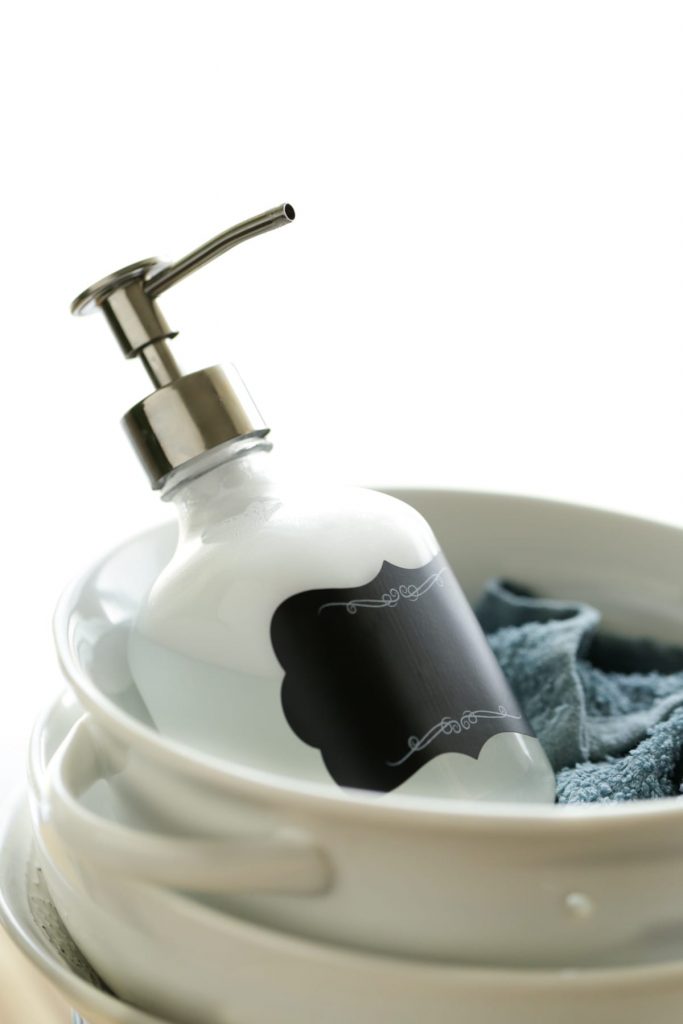
Hi Kristin!
I have tried so many of your recipes and absolutely love them! I was wondering if you knew where you purchased this glass soap dispenser and those labels? I love them both! Thanks so much! 🙂
Hi Kristin, Thanks for sharing all these amazing natural recipes. I love reading and trying out new things from your website. I would like to know if I can use liquid castile soap to replace the Sal Suds? What do you think? Will it still work well? Thank you.
Hey Tina, I think castile soap could work in this recipe, but it probably won’t have the same grease-cutting power.
Hello! I made this homemade dish soap and I love how it works but mine keeps separating and solidifying to the point I have to sit it in its container in hot water just in order to melt it down where I can shake it up to combine it again and use it. Suggestions?!?!
Hey Britt, I recommend making sure that the dry ingredients are fully dissolved during the initial heating and mixing. Also, adding about 1/3-1/2 cup more water to the recipe in the beginning may help.
I tried this soap and it works great. I have tried several recipes over the years trying to find one that works how I want it to. It is one of my top homemade soaps to use!
Hey Ashlie, Awesome! I’m so glad you’re enjoy this dish soap!
I have made this soap 2 times… and i even am using the same pump you have in the picture. i love the soap but the straw part keeps clogging. i have to remove it and get clumps out… what should i do? the soap is already very liquidy, so i would hate to have to add even more water unless there was a way to make it thicker.
Hey Alicia, I’ve found that some soap dispensers work better than others. The one I’m currently using is similar to the one pictured (just larger) and it takes a number of “pumps” to get the soap through the skinny spout. I have another soap dispenser that’s made from a mason jar and it doesn’t have such a hard time getting the soap through the spout. This soap is concentrated, so you can definitely add 2-3 more tablespoons of warm water, then shake the bottle to get things “flowing” again. Homemade soap is usually watery despite it being concentrated, since it doesn’t contain thickeners. I’ve heard that adding salt to the soap can help thicken it if you want less water…I haven’t tried this method, yet.
Another option might be to use a squirt bottle (similar to store-bought soap).
I just now saw this. Thanks for your reply. :). Will make this soon! On a related but different product, I recently made liquid laundry soap. What about harmful bacteria from that since it will last longer than two months? Is there a time frame that you would make sure to use that? Thanks so much!!!
Hey Linda, If the laundry soap sits for a while, then the bacteria growth concern rises (yeast, mold, etc.). We do a lot of laundry in our house, so making 18 cups doesn’t present much of a concern since the laundry soap has a quicker turn-around. I wouldn’t let the laundry soap go for longer than a couple of months at room temperature. Adding tea tree, grapefruit seed extract, or thyme essential oil can act as a natural preservative. That recipe can also be cut in half, if needed.
Hi! Just wondering, will this breed unhealthy bacteria? I’m leery about making some things homemade because of this but would love to start!
Thanks!
Hey Linda, Great question! Given time just about anything that’s exposed to air and our hands can breed bacteria, so there are definitely a couple of guidelines to follow:
1/ Boiled and cooled OR distilled water is best to use for long-term products (usually anything over 2ish weeks in my opinion). Tap water (which contains bacteria–mostly good, but some not so great ones can be in there) is okay for short-term use products.
2/ Use clean materials/tools. Bacteria is usually introduced into homemade products when the handling materials are dirty. I’m sure this isn’t an issue for most of us, but a good one to keep in mind :).
3/ Small batch products. There are a lot of products on Pinterest and blogs claiming to make enough water-based product to last 12 months (etc.), but those really concern me when it comes to bacteria issues. I like to make my water-based homemade products in smaller batches, so new ones must be created within a couple of months.
Hope that helps :). After following these guidelines, I haven’t run into any mold or bacteria issues with my homemade water-based products.
What on earth is the point of making your own soap if you are putting Sodium Lauryl Sulfate in it(Sal Suds)?
Hey Ammy, You’re welcome to use castile soap instead. Here’s a helpful article about Sal Suds: http://www.lisabronner.com/there-is-no-cancer-risk-from-sls-sodium-lauryl-sulfate/.
Thank you for posting this! Your recipe is great – and I’ve tried several of the online offerings. I just wanted to add a comment about adding salt; my dish soap goal may be a bit different than others. Creating half batches of your recipe (6 tablespoons of Sal Suds per batch & homemade ‘thieves/robbers’ EO blend), I’m trying to perfect a recipe that will work well when sudsing with a tiny bit of scrub water, then using a minimum of cold rinse water, or a trickle until it heats up (I live in California, and am trying to reduce the water we consume). 1 teaspoon of sea salt to the half-recipe helps to gel the dish soap to the consistency I like. One squirt on the sponge works for an entire sink full of dishes. My next batch I’m going to decrease the amount of Sal Suds to see if it rinses ‘squeaky clean’ a little more quickly. The optional jojoba and glycerin is a MUST imho. Thanks so much!!
Awesome, Maria! Thank you so much for sharing–great tips. It’s great to hear you’re enjoying the soap.
Do you add the salt to the heated mixture or after it cools?
Hello,
I made the soap yesterday, neatly following the recipe and filled it in a glass bottle. Unfortunately, the soap solidified completely after and hour and I have the hardest time to get it out of the bottle, in fact it’s impossible. It’s one giant gel blob. I tried to add some more water in the attempt to dilute it out but with very little success. What did I do wrong? Is it worth trying to re-heat and see if it becomes liquid again and maybe then add more water to thin it out.
I’d appreciate your feedback. Thanks
Hey Melanie,
I think reheating will help. If the powder ingredients aren’t fully dissolved this can happen. You might even be able to use a double boiler method with your soap container, if it’s glass. That way you don’t have to remove the soap from the container.
Let me know how it goes!
This is fantastic info, thank you for sharing. I moved into a home that doesn’t have a dishwasher, so most of my washing is done by hand. That’s all the better reason to minimize the chemicals I come into contact with every day, so I’ll be sure to attempt this recipe. 🙂
Thank you, Stephie! Enjoy!!
I made this with the Baby Mild castile soap, lemon essential oil, glycerin and almond oil- it didn’t turn out so well. After a couple days this mixture became very thick-almost solid, so I watered it down with an additional cup of water. The big turn off was how oily it made everything. I used vinegar in my rinse water but the dishes still felt oily. The dishsoap water was rather milky without suds, but it did clean my dishes so I used it up anyway. Have you ever tried using just liquid castile soap as dish soap?
Hey Bethany, Oh no! I’m so sorry that happened. My guess is the baby mild castile soap didn’t quite have the power to get everything clean. I’ve used/tried plain castile soap, but it always has the same result you described–oily residue. The washing soda and borax help with that issue. Sal Suds does work by itself, but not castile soap. It may also depend on the particular castile used.
I used castille soap. It doesn’t make bubbles, but works well. Yes, mine separated so I put it in the blender. Fluffy dish soap.
Great idea, Susan! Thank you for sharing!
Ok, so I followed the recipe and made some soap about a week ago. Everything has been going great, until today. The washing soda and borax seem to have clumped and hardened on the bottom of my jar; no matter how much I shake it will not mix again. Help!!
Oh no, Meghan. My suggestion is to try adding a bit of hot water to the jar. Just enough to get the soda and borax moving, shaking and dissolving :).
Thank you! I will try it and let you know!
The same thing happened to me! I made it last night and this morning it was solid. I added some more water and mixed it up, I hope it will settle soon. I did substitute castile soap instead of Sals Suds (I didn’t have any at home). Would this have caused the issue?
Hey Flora, Possibly, I’m not sure if the castile soap changed the consistency. Adding hot water to the mix should loosen it up. Let me know how it goes!
Thank you for this recipe!!! I can’t wait to try it out, although, due to an SLS allergy I need to use the castile soap instead of the Sal Suds (boo!). Maybe I can play around with the essential oils to see if I can get a better grease cutting effect? Does anyone know a way to boost the SLS free version to make it more effective?
Again, Thanks!!! 😀
Can this be made without the essential oils?
Also, if I keep a bottle by the sink, could it double as a hand wash?
Hey Laurie, Yes, you can skip the essential oils. They just add extra cleaning power. This soap can be used a hand soap, although the ingredients may be tough on hands when used multiple times a day.
I just want to say that I have used many of your DIY things and I love them. I’m 59 and have been making most of everything I can since I was 22 and its amazing how I’m still learning new things and or up grading. Always looking forward to what you come up with next. I’m like a sponge soak that stuff up.
Thank you so much, Shorty! I’m so blessed to share my experiments (recipes :)) with such an amazing community.
Did you know that the Sal Suds have Sodium Laurel sulfate a big no no.
What’s your opinion?
Yoli
Hey Yoli, Here’s an interesting article on the Sodium Lauryl Sulfate debate (also read the research article she links to within the post): http://www.lisabronner.com/there-is-no-cancer-risk-from-sls-sodium-lauryl-sulfate/. I personally don’t have an issue using Sal Suds. I think Sal Suds cleans better than castile for specific jobs like dish soap and soft scrub. I also think it’s 100% better than the ready-made soaps on the market. You could try castile soap instead of the Sal Suds. I edited the recipe to include the castile soap replacement option (which I’ve used, but find the Sal Suds works the best for cutting grease and food particles) if anyone would like to stay away from Sal Suds.
Hi Kristin,
I am excited to try your dish soap recipe. I have been looking for a replacement for dishwasher detergent and wonder if you have used this recipe in the dishwasher or exclusively for hand washing?
Thank you!
Hey Monica, This soap is really bubbly (thanks to the Sal Suds) so I’m afraid it may damage the dishwasher. I haven’t found/made an effective homemade dishwasher recipe just yet.
Can I use this as automatic dishwasher soap as well and if so how much should be used?
Hey Mattie, I haven’t tried this in the dishwasher, yet. I’m concerned it may be too bubbly.